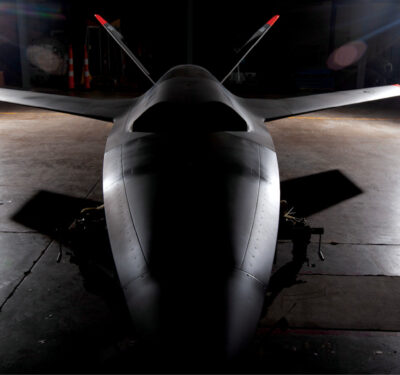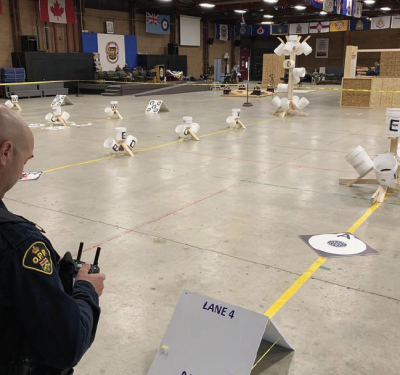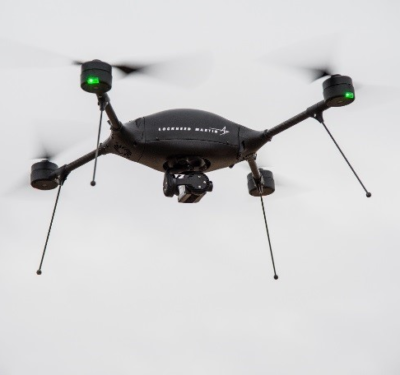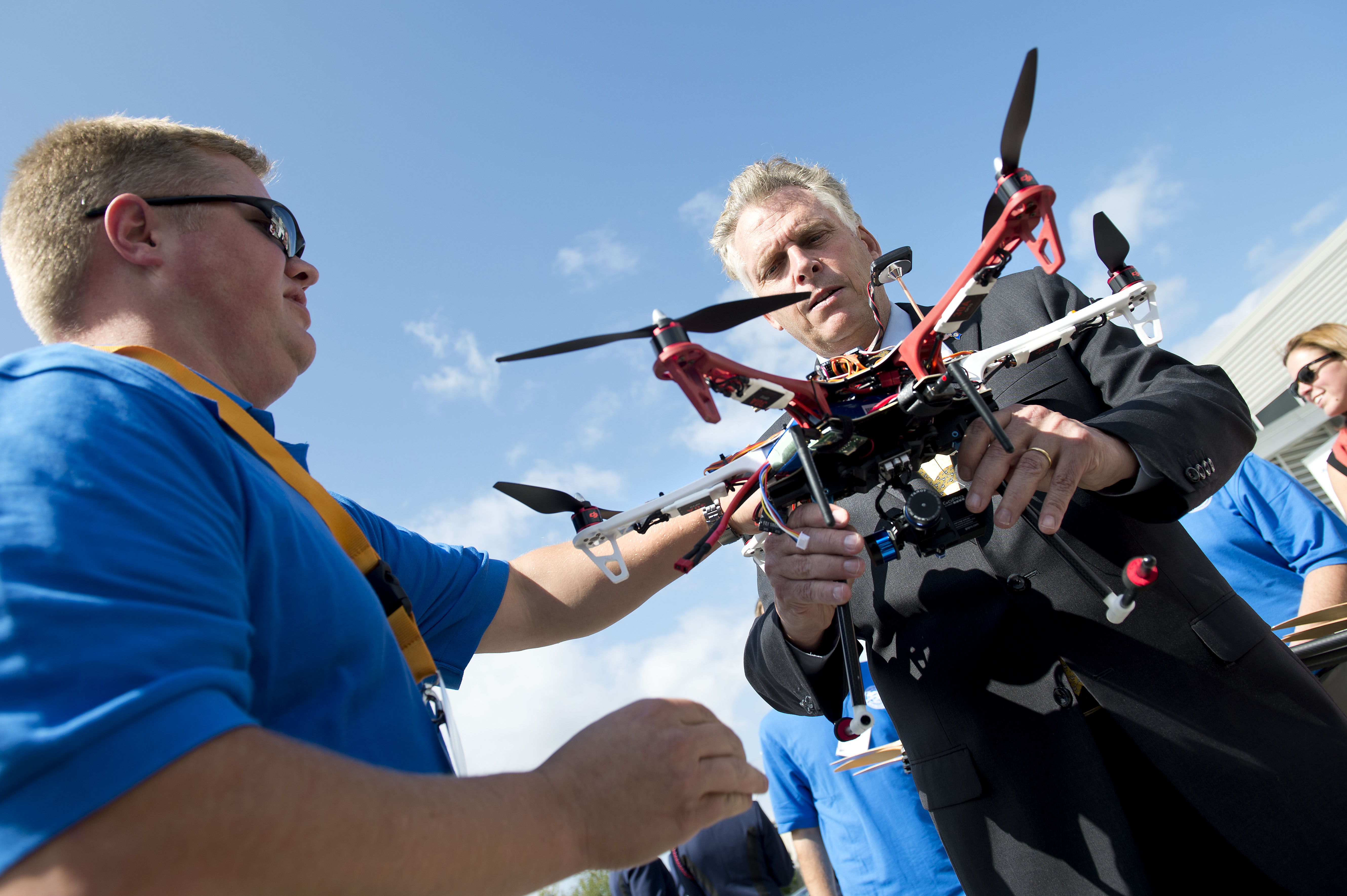
Virginia Governor Terry McAuliffe examines a drone after the demonstration flight. Mid-Atlantic Aviation Partnership
Covering the news isn’t always easy. In fact, there are times when it’s downright dangerous. But if journalists could safely use UAVs to take video and photos from above a crime scene or large traffic accident, it would not only reduce the danger that often comes with the job, it could also improve the quality of their reporting.
That’s why news organizations are working with universities and the FAA to determine how they can safely incorporate UAVs into the newsgathering process. And a lot has happened to move that forward in the last few weeks.
A coalition of 10 news organizations, including The New York Times, The Associated Press and NBCUniversal, recently partnered with Virginia Tech to test the use of UAVs in newsgathering, while CNN entered into a Cooperative Research and Development agreement with the FAA. This agreement comes only months after CNN began working with the Georgia Tech Research Institute on an initiative designed to help media organizations better understand how UAVs can be used in newsgathering.
While both programs are still in their infancy, the journalists and researchers involved are excited by the possibilities this emerging UAV technology offers the broadcast news industry.
“Drones can offer a different perspective and shoot photos and video from different angles,” said Rose Mooney, executive director of the Mid-Atlantic Aviation Partnership at the Institute for Critical Technology and Applied Science at Virginia Tech. “It would be a tool in their kit to get up in the air and report the news very quickly and efficiently, and inexpensively.”
The Early Stages
The research team at Virginia Tech is talking with journalists from the coalition to get a feel for their needs and what type of UAV and payload can help meet those needs, Mooney said. For now most of those talks are with middle management, but the research team will also work with journalists on the ground.
They’ve talked about using UAVs to cover a variety of stories, from sporting events to breaking news to special reports. Eventually Mooney imagines they’ll be able to use UAVs to cover just about any story, but at first they’ll likely only be used during planned events.
“Someday journalists will have the technology right in their news trucks or in the back of their cars and it will be readily accessible,” Mooney said, noting they’re targeting UAVs that weigh 55 pounds or less. “All areas of journalism will be affected, but we have to do the research with the journalists and work with the FAA to safely integrate UAVs into the airspace.”
The team at the Georgia Tech Research Institute is having the same type of conversations with CNN and are now focusing on selecting the cameras, lenses and data links that will go on the aircraft and provide the news organization with the high-quality video they’re after, said Mike Heiges, Principal Research Engineer at GTRI. They then have to find the right UAV to carry that payload.
Once they match the payload with a UAV that can carry it, GTRI will apply for a Certificate of Authoriztion from the FAA to begin flying and testing their UAV. Heiges hopes they’ll have everything in place to start testing sometime this summer. CNN personnel will also be trained to operate the UAV as part of this project.
“The goal is to have enough information for CNN to apply for an exemption of their own and be able to explain to the FAA how they intend to operate the UAV for newsgathering,” Heiges said. “The FAA is involved in this research so they can guide us and make sure we produce exactly what they need to see to give them confidence this aircraft can be operated safely.”
The Benefits to Journalists
Every time a team of journalists gets in a helicopter to cover a news story or to report on traffic, they put their lives in danger. UAVs would eliminate the need for that, making enhanced safety one of the biggest benefits, Mooney said.
“Any time you have an aircraft flying overhead, especially flying over people trying to cover a scene, that’s always a risk,” Heiges said. “Manned aircraft have a good safety record but if one does come down you risk people on board and on the ground. A small UAV reduces that risk.”
UAVs also help reduce costs, Heiges said, because instead of paying a manned helicopter to provide aerial footage of a story, journalists can quickly and easily use the UAV.
They can also tell stories in different ways, Mooney said, with UAVs offering journalists the ability to get footage from different angles and perspectives, and to readily have access to that footage.
The Benefits to Consumers
In today’s 24 hour news cycle, people want access to the latest information on developing stories and they want it as soon as possible. UAVs make it easier for broadcast journalists to quickly deliver the latest news quickly and accurately, Mooney said.
UAVs also can be a huge help when delivering traffic reports, whether a large accident is tying up traffic or the roads offer smooth sailing.
“It will certainly make the news readily accessible,” Mooney said. “We all like our news reports on traffic so we know what we’re doing first thing in the morning.”
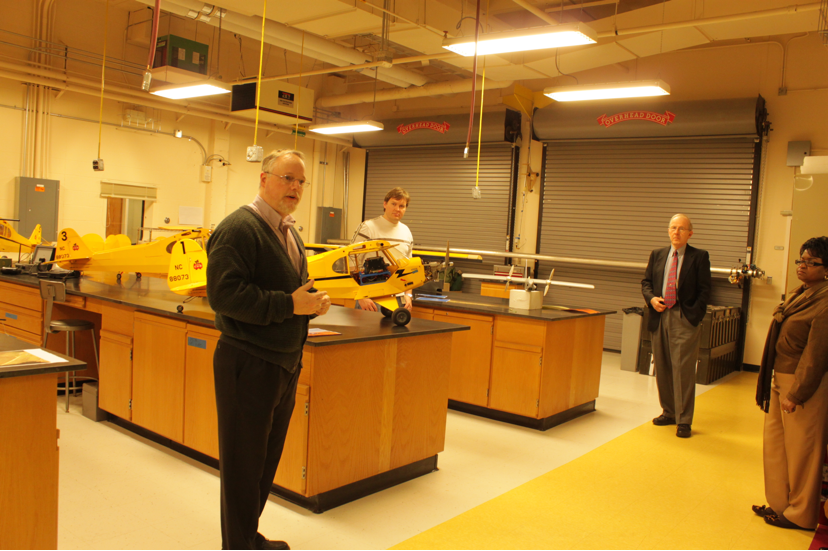
Mike Heiges gives a briefing in the GTRI Unmanned Aerial Vehicles laboratory.Georgia Tech Research Institute
The Challenges
While this is an exciting time for broadcast journalists, there are certainly challenges that must be overcome before UAVs can be integrated into the airspace for newsgathering, one of which includes waiting on the FAA to release its regulations.
Even so, Mooney expects to see news organizations to gradually start using this technology in the coming years, with more and more applications of the technology developing over the next five years.
But before any of that can happen, researchers have to find a way to safely integrate UAVs into the airspace, and to make sure they don’t interfere with law enforcement or emergency responders who are on scene when they’re being used to cover breaking news. That’s why Heiges and his team will work closely with law enforcement throughout this research project and hope to include them this summer as they test their UAV in various scenarios.
“A lot of times a news event can be a chaotic event,” Heiges said. “How do you coordinate with the people on the scene? CNN wants to be responsible in their use of UAVs and wants to be able to come on the scene and coordinate with law enforcement and emergency personnel so they can fly safely and know when to get out of the way.”

Mike Heiges, kneeling, and Warren Lee install a sensor package on GTRI’s flying UAV test bed, GAUSS.Georgia Tech Research Institute
The Future
UAVs represent an emerging new industry, and not only can media organizations use them as a tool to help cover the news, they can also educate the public about their many commercial uses, Mooney said. Many people still only associate UAVs with military operations, but new research and developments show they have the potential to make a variety of industries safer and more efficient. By using UAVs, journalists can help educate the public about the many benefits these systems offer.
“Any new technology is like this. Twenty five years ago everyone was excited about GPS and being watched, and now we all have it on our cell phones,” Mooney said. “This is the progress of new technology. The UAV industry will develop technology that will make manned aircraft safer in the future. There’s a lot of excitement about the next pioneering industry and all the different ways the public will benefit from it.”
Because the video capability and technology that can fit on a small UAV is already pretty advanced, broadcast journalists will be one of the first professionals to benefit from UAVs once they’re officially integrated into the airspace, as will the consumers who will get to see the news in a different way. These initial research efforts are the first step toward making that a reality.



